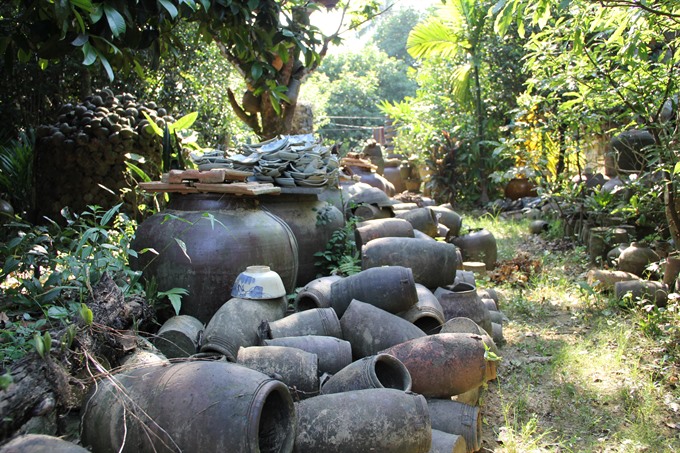 Life & Style
Life & Style

Archeologists delivered 356 reports on the new archeological findings around Việt
 |
| Ancient history: Pottery items excavated from rivers in Thừa Thiên-Huế. They are stored at the home of late researcher Hồ Tấn Phan, a pioneer of underwater archaeology in the locality. — VNS Photo Phước Bửu |
THỪA THIÊN-HUẾ — Archeologists delivered 356 reports on the new archeological findings around Việt
The reports were issued in four fields, of which prehistory archeology issued 115 reports, history archeology 184, Champa-Óc Eo archeology 41, and underwater archeology 10. Six other reports addressed general issues.
The reports included results of investigations and excavations, new findings and new methodologies for the period of 2017-2018.
The prehistory archeology reports explained remarkable new findings thanks to the excavations at Rộc Tưng archeological sites in
In the northern province of
Other interesting findings of prehistory archeology were made in Krông Nô volcanic cave and Đắc Sơn site in Đắk
Excavations in the relics of Luy Lâu ancient wall in Bắc Ninh and Kính Thiên palace in Hà Nội, and Hải Vân Quan ancient gate in Thừa Thiên-Huế were part of the work of historic archaeologists.
The Champa-Óc Eo archeology branch reported on the recent excavations including Phong Lệ tower in Đà Nẵng, Champa pottery workshop site Gò Cây Me in Bình Định, and architectural relic An Phong in Bến Tre.
Underwater archeologists listed the excavation of sunken ships in Lăng Cô in Thừa Thiên-Huế and in Bình Châu in Quảng Ngãi during the period.
“The new findings have offered more materials for the historical study of Vietnamese people. These will contribute much for the conservation and promotion of local culture and traditions in the context of global integration,” said Bùi Văn Liêm, deputy director of the Việt Nam Institute of Archeology.
According to the institute’s director Nguyễn Giang Hải, it will work closely with Russian archeologists to enhance the scientific values of those findings in An Khê as well as UNESCO experts in developing the local underwater branch.
It also has plans to trace the DNA of those found in Tuyên Quang to find out the origin of the people. — VNS




